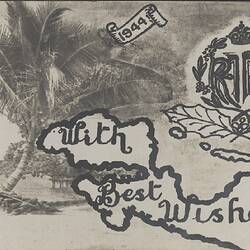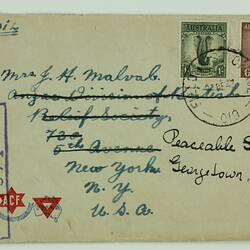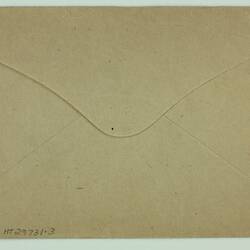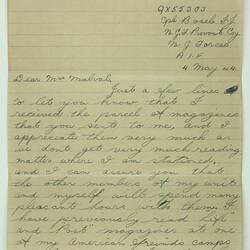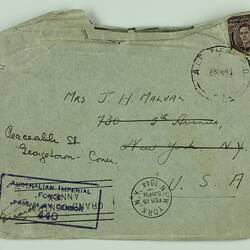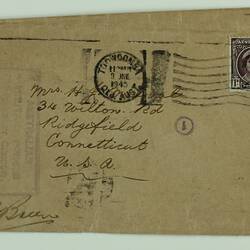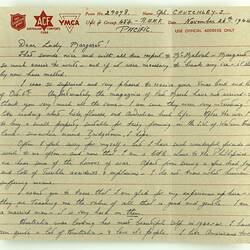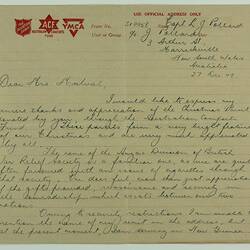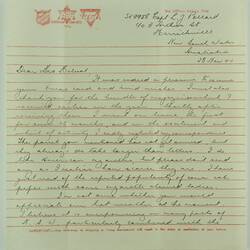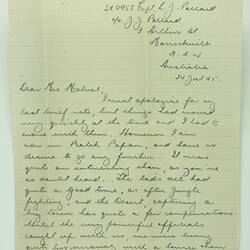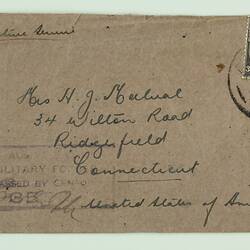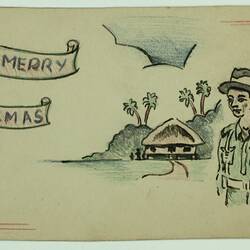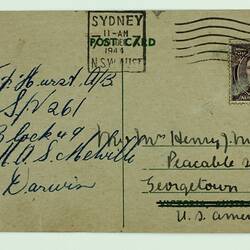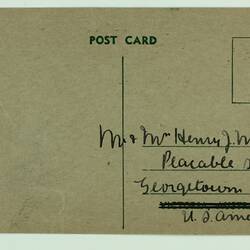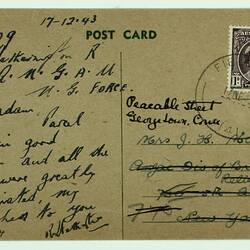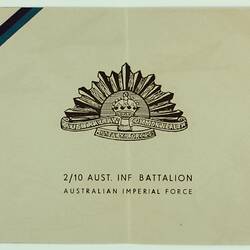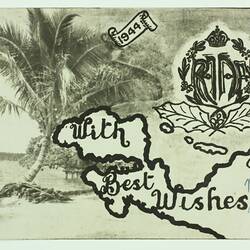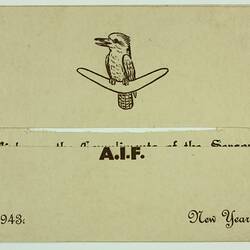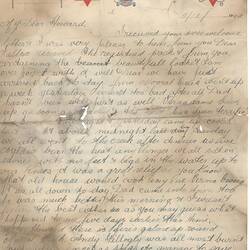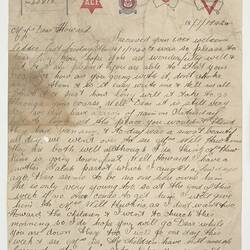The Australian Comforts Fund (ACF) was first formed in August 1916 from a number of individual state based organisations that had been created at the beginning of World War I to send comfort to the troops. Many local women's groups formed early in the war to provide various 'luxury items' to supplement the Australian soldier's army rations and personal kit. These groups were amalgamated in 1916 to form a national association which sought to provide additional 'comfort' items to all Australian's who were abroad. This federated organisation was titled the Australian Comforts Fund and quickly grew into a fundraising, collecting, sorting and distributing machine which rivalled the scope of the Red Cross. At the conclusion of World War I, the ACF officially dissolved as of the 16th of April 1920, however it was revived in 1939 with the outbreak of World War II to provide comforts to a new generation of soldiers.
A significant majority of Australia volunteers during World War II worked for one of the two largest wartime organisations: the Australian Red Cross and the Australian Comforts Fund. Both these organisations were officially recognised by the Australian Government to support and assist Australia's servicemen and women. The ACF was run largely by women volunteers who undertook the majority of administrative and manual work.
The aim of the ACF was to provide free 'comfort' items that were not supplied by the services to all Australian servicemen. These items included singlets, socks, pyjamas, cigarettes and tobacco, razor blades, soap, toothbrush, toothpaste and reading material (newspapers and magazines). Additionally, the ACF also provided recreational facilities, rest rooms, sporting equipment, gramophones and records to the troops, as well as regularly providing writing materials such as pencils, paper and postcards so the soldiers' could write home.
The ACF relied on fundraising and donations to supply these items to the Australian soldiers. The ACF raised thousands of pounds though various activities, such as door knock appeals, fetes and button days, to cover the cost of materials and shipping of items to the troops. The number of goods supplied, funded and distributed by the ACF volunteers is quite remarkable.
The ACF also regularly dispatched Christmas hampers to troops abroad. The Christmas hampers generally comprised of a plum pudding, cake, small tin of fruit, tinned cream, razor blades and tobacco and were donated or sponsored by members of the public. These hampers were generally supplied to each army unit and then distributed by a number of ACF commissioners. By the close of operations in 1946, more than 1.5 million hampers had been dispatched to troops by the ACF.
The ACF provided a source of comfort, support and encouragement for the troops abroad and offered a means for women at home to contribute to the war effort and identify with the men in the trenches. The ACF acted as a vital link between home and the battlefields. The Australian Comforts Fund officially closed on the 27th June 1946.
References:
Digger History, Australian Comforts Fund, accessed 24/07/2006, <http://www.diggerhistory.info/pages-conflicts-periods/ww2/acf.htm>
Australian War Memorial, The Official History of the Australian Comforts Fund, accessed 2/3/2020, https://www.awm.gov.au/collection/accessing-records-at-the-memorial/findingaids/special/souvenirs/comfortsfund
Oppenheimer, M. Volunteering: Why We Can't Survive Without It, University of New South Wales Press, Sydney, 2009. pg. 43
'Christmas Hampers', Cairns Post, 14 September 1942, Accessed 20/12/2011, <http://nla.gov.au/nla.news-article42359915>
More Information
-
Keywords
World War II, 1939-1945, Australian Military Forces, Australians at War, Voluntary Work, Volunteers, home front
-
Authors
-
Article types

